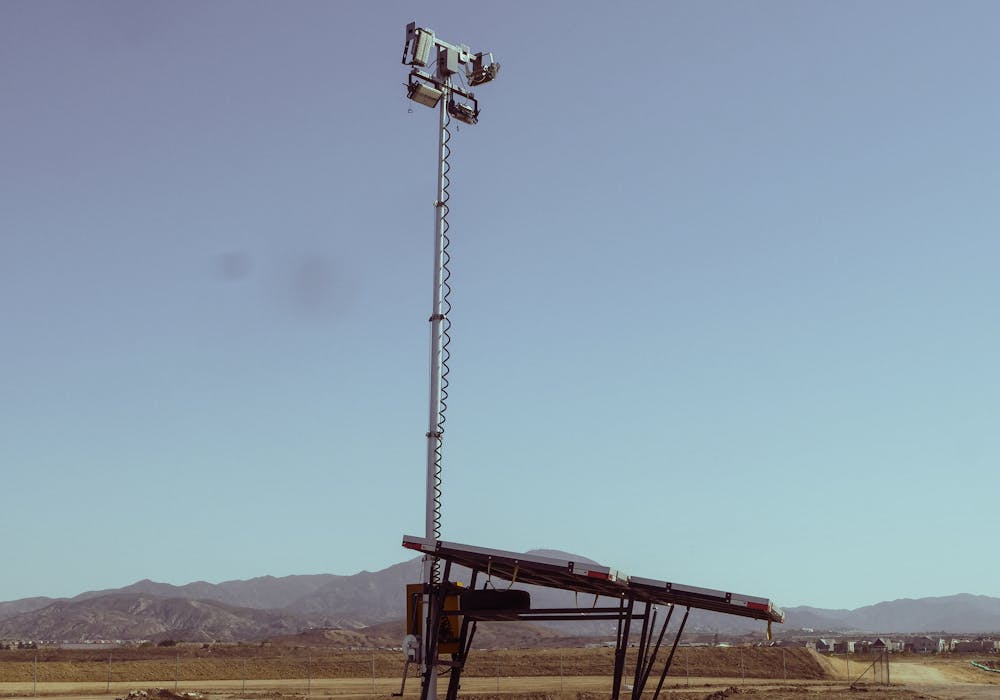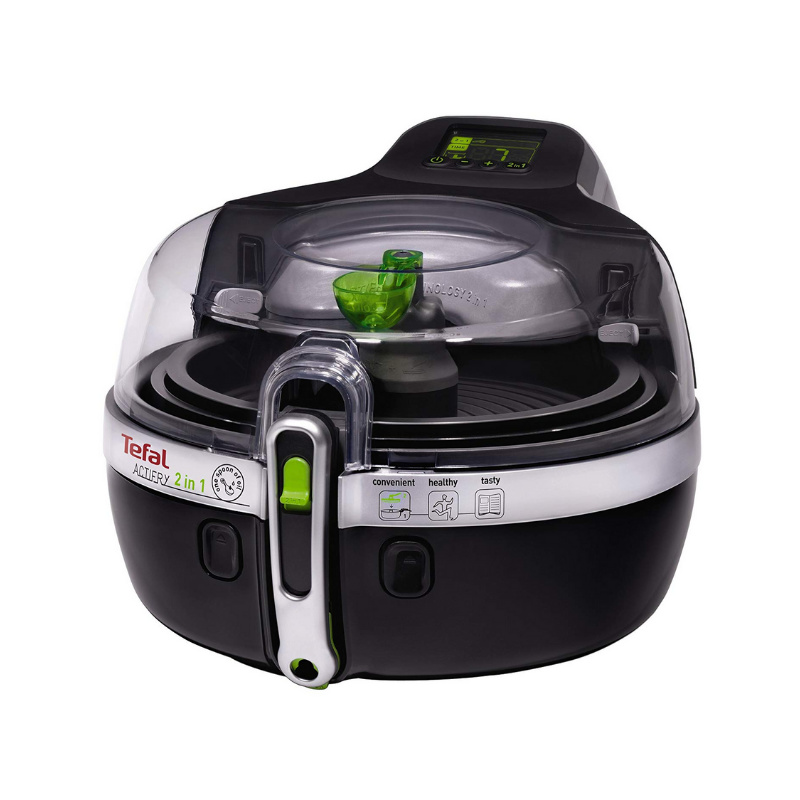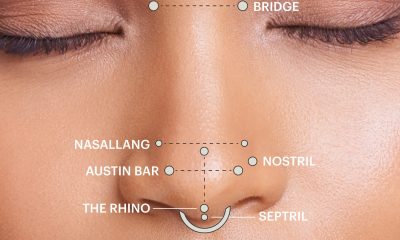Tech
What is Adversary Simulation with Caldera?

In the first of these three use cases, Caldera seeks to test the detection capabilities of several tools of the same type (for example, multiple EDRs together). This approach allows users to compare and select the tool that best suits their needs, based on context, expectations, and Caldera’s detection capabilities. Additionally, evaluating the investigative possibilities among different tools is intriguing because it provides valuable insights into their effectiveness.
Today, attacks are increasingly complex and spread out over time. This is why experts are now talking about Advanced Persistent Threat (APT). In response, detection mechanisms have also evolved, with the advent of Endpoint Detection & Response (EDR) technologies, which aggregate and correlate single events to help detect weak attack signals. These EDRs, among other technologies, are generally operated within a Security Operation Center (SOC). So how do we ensure that these detection mechanisms are configured correctly, and how effective are they?
What is the role of adversary simulation?
Adversary Simulation, often referred to as Red Team Testing, is a cybersecurity technique that involves simulating real-world cyberattacks to assess an organization’s security posture. In practice, this comes in the form of servers and/or agents, which simulate attacks or exploits of vulnerabilities, in a more or less complex and procedural manner.
In order to categorize and reference attacks correctly, different security frameworks are used, such as the Cyber Kill Chain or the MITER ATT&CK matrix. The Cyber Kill Chain offers, for example, a list of 227 attack techniques divided into 14 tactics, and is widely used to simulate the stages of a complex attack.
What is Caldera?
The non-profit organization “ MITRE ” , which is at the origin of the “ ATT&CK ” framework mentioned above, has also developed an Open Source adversary simulation tool: Caldera, available on GitHub.
Its operation is rather simple. Only install it on a dedicated server, then deploy an agent that functions identically to a Beacon on client machines. The server can then act in a manner identical to a “ Command and Control ” (C2), by giving directives to the agents to carry out different attacks or data exploitations.
What makes this tool interesting is, beyond giving instructions to a live agent, that it allows you to develop or replay complete attack scenarios. In particular those carried out by APT groups or by companies having carried out an intrusion test operation on the IS.
Caldera natively offers a number of commands and tools. The latter, called “ Ability ”, allows for example to do enumeration, download payloads or malicious tools – such as “ Mimikatz ”, but above all to execute them. However, some of them are templates, and therefore require modification. Finally, it is also possible to create your own Ability based on “ in-house ” scripts , for greater flexibility. An interesting capability of Caldera is its ability to obfuscate, which enables it to hide malicious commands by interpreting them as base64, for example.
When and why to use it?
Caldera can test different detection tools and means, replay the different stages of an intrusion test or a security audit, or even prepare a SOC.
Tool Detection Capability Testing
In the first of these three use cases, Caldera seeks to test the detection capabilities of several tools of the same type (for example, multiple EDRs together). This approach allows users to compare and select the tool that best suits their needs, based on context, expectations, and Caldera’s detection capabilities. Additionally, evaluating the investigative possibilities among different tools is intriguing because it provides valuable insights into their effectiveness.
Scenario Reproduction for Attack Testing
For the second case, the idea is to faithfully reproduce the attack scenario used by the company that carried out the intrusion test. This action aims to verify that the scenario fails, once the auditors have effectively implemented the recommendations.
Integration with SOC for Enhanced Detection
Finally, the last use case is where Caldera receives a SOC. Indeed, the SOC collects data from all deployed security tools and adds a part of event correlation with a SIEM ( Security Information and Event Management ). This makes it possible to refine detections, based on all the data sources collected. The use of an adversary simulator can therefore contribute to the recipe of a SOC, and verify the effectiveness of its detections in the face of complex attack scenarios.
In a context where the concept of Purple Team is increasingly important, adversary simulation is undoubtedly the key element of its implementation, in order to guarantee continuous improvement of detection tools and IS configurations. It allows you to test all the processes put in place by the SOC to ensure that they work optimally. However, its use in no way replaces a real Red Team operation , it is only a complement to it. The combination of these two factors will contribute to a comprehensive and viable security strategy.
Conclusion:
In conclusion, Caldera presents a vital tool for modern cybersecurity, enabling organizations to proactively assess and enhance their defense mechanisms. By simulating attacks and exploits, Caldera empowers companies to validate detection solutions, recreate real-world scenarios, and bolster Security Operation Center readiness. Its flexibility and open-source nature make it a valuable asset in the ongoing battle against advanced cyber threats. Embracing adversary simulation tools like Caldera is essential for organizations striving to maintain resilience in the face of evolving security challenges.
FAQs
What is caldera in cyber security?
Caldera stands as a sophisticated cybersecurity framework meticulously crafted to seamlessly automate adversary emulation, bolster manual red-team efforts, and streamline incident response protocols. Leveraging the foundation of the MITRE ATT&CK™ framework, it remains a dynamic research endeavor led by MITRE, aimed at fortifying cyber defenses across diverse landscapes.
What is a Caldera server?
Caldera serves as a cutting-edge adversary emulation platform engineered to effortlessly conduct autonomous breach-and-attack simulation exercises. Flexibility is a hallmark, allowing for manual red-team engagements or automated incident response with equal ease and efficiency.
Read Also:
Tech
TanzoHub: Connecting Tech Education and Innovation

Amidst the modern age of digitalization, the attainment of wisdom assumes a crucial role in shaping our understanding of the surrounding world. With the rapid advancement of technology, platforms such as Tanzohub emerge as pioneers in revolutionizing the accessibility and interaction with knowledge. Within this discourse, we shall explore the innovative characteristics of Tanzo Hub and expound upon its influence on the domain of information retrieval.
The Conceptual Framework of TanzoHub
TanzoHub emerges as a cutting-edge platform that furnishes a seamless and intuitive avenue for accessing a diverse spectrum of information effortlessly. By using AI technology and data analytics, Tanzohub customized content based on what users like, their interests, and what they have looked at before. This personalized approach helps users stay up-to-date with the latest news and updates in their areas of interest without getting overwhelmed by too much information.
Distinctive Features of TanzoHub
Tailored Content Recommendations:
Tanzohub employs sophisticated algorithms to scrutinize user behavior and preferences, thereby furnishing content recommendations customized to individual users.
Cross-Platform Accessibility:
Users enjoy the convenience of accessing TanzoHub across multiple devices, ensuring a uniform and user-centric experience across various platforms.
Real-Time Updates:
TanzoHub delivers updates promptly on current events, trends, and pertinent information, ensuring users remain well-informed regardless of their geographical location.
Interactive Interface:
The platform boasts an interactive interface with seamless navigation, facilitating effortless content exploration and engagement.
The Advantages of TanzoHub for Users
TanzoHub offers a lot of advantages to users, rendering it an invaluable tool for staying informed and connected in today’s frenetic milieu.
Enhanced Knowledge Management
By furnishing a centralized platform for information retrieval, Tanzohub aids users in organizing and managing their knowledge effectively. Users can archive articles, videos, and other content for future reference, thereby curating a personalized repository of knowledge.
Augmented Learning Experience
The personalized content recommendations on TanzoHub foster continual learning and skill enhancement. Users have the opportunity to delve into new subjects, unearth relevant resources, and broaden their intellectual horizons effortlessly.
Heightened Productivity
With expeditious access to curated information, users can economize time spent scouring for pertinent content and concentrate on their tasks with heightened efficiency. Tanzohub streamlines the process of information retrieval, empowering users to remain productive and engrossed in their pursuits.
TanzoHub’s Future in Tech Education
As TanzoHub continues to innovate, it’s clear that traditional classrooms are evolving. Immersive worlds offer invaluable learning experiences in safe, limitless virtual domains. With TanzoHub Studio leading the way, tech education is becoming more personalized, engaging, and accessible than ever before.
Exploring TanzoHub’s Innovations
- TanzoHub Studio is at the forefront of interactive educational technology. It creates immersive metaverse environments where learners explore vibrant virtual worlds and gain hands-on experience with complex concepts.
- Augmented Reality (AR) enhances the learning process by overlaying visual elements onto real-world environments. TanzoHub’s AR-enabled metaverse supplements traditional learning materials with interactive 3D models and real-time simulations.
- Virtual events like concerts and festivals are reimagined in TanzoHub’s metaverse. These events transcend geographical barriers, offering users a sense of presence and community.
The TanzoHub App: Accessible Tech Education for All
The TanzoHub App ensures seamless learning across devices, from smartphones to desktops. It fosters collaboration and engagement through features like cross-device synchronization and real-time collaboration tools.
TanzoHub Marketplace: Where Culture Meets Technology
TanzoHub Marketplace celebrates art, wellness, and technology. From dance and theater classes to virtual weddings and events, it offers a diverse range of experiences tailored to users’ passions.
Gaming and eSports: TanzoHub’s Next Frontier
TanzoHub embraces gaming and eSports, blending entertainment, competition, and technology. It aims to create immersive experiences that engage users and set new standards in the gaming industry.
Fostering Social Connection Through TanzoHub’s Platforms
TanzoHub’s platforms promote global connection through speeches, presentations, and networking events. They provide opportunities for professionals to collaborate and innovate in a digital environment.
TanzoHub Founders: Visionaries in Tech Education
Mark Zviman and Alan Dai founded TanzoHub with a vision to revolutionize tech education. Their commitment to accessible and engaging learning experiences has driven TanzoHub’s growth from seed funding to industry prominence.
Conclusion:
Tanzohub is changing how people get and interact with information. It gives users a unique and effective experience tailored just for them. By harnessing the potential of AI and data analytics, Tanzohub is spearheading the transition towards a more informed and interconnected society.
Read Also:
StreamEast – An Outstanding online sports streaming platform
Tech
Everything you need to know about portable solar panels

Portable solar panels offer new freedom. They allow you to have a power supply everywhere. Space-saving and very efficient, they increase your autonomy on vacation and during all your travels.
What are portable solar panels?
Portable solar panels are miniature photovoltaic panels that convert the sun’s energy into electricity. They can power a charger or a portable battery. Lightweight and designed to be used everywhere, they allow you to charge all electronic devices : smartphone, camera, tablet, GPS, laptop, camera. With a panel measuring 32 x 17 cm and only 3 mm thick, you will be able to supply electricity to all your small devices such as smartphones or sports cameras. A 6W panel can produce 1500 to 3300 mAh per day.
Portable solar panels are suitable for all outdoor leisure activities: skiing, hiking or the beach. If you travel by motorhome, by boat or if you go trekking, you will considerably increase your energy autonomy.
The panel provides electricity directly or stores it in a miniature battery . This is external for high-power panels or integrated inside a module for extra-flat flexible panels . It is then possible to use the stored energy on cloudy days or even at night.
Portable solar panels offer efficiencies of 10% to 23%. Charging times are almost identical to those of the original chargers. If the panel is used live, one hour of charging provides 10 minutes of communication with a mobile phone.
Large models can be folded to save space. An unfolded panel of 47 x 21 cm takes up only 21 x 13.5 cm when folded. Reinforced eyelets make attachment easier. The weight of solar panels varies from 150 g to 2.5 kg. Smaller models have a USB connection.
More powerful panels offer a 12V or 18V output. High-end models are particularly efficient because they have most often been designed for military use. They are therefore suitable for intensive use, even in extreme conditions.
Two main types of portable solar panels
There are two types of portable solar panels:
single-layer panels:
There are two subtypes; monocrystalline silicon models and so-called amorphous models. Monocrystalline panels are the least expensive. Amorphous silicon panels are lighter and stronger but cost 20 to 30% more. The efficiency of amorphous silicon panels is lower (around 10%) but they can be used over a wider time range.
thin-layer flexible panels:
These so-called second or third generation panels are made up of several layers. They have excellent performance and remain effective even when the light is reduced. Several materials can be used for their design:
- amorphous silicon;
- and CIGS ;
- with CdTe;
- organic polymers.
Flexible solar panels are thin and light. They can fit anywhere. The multifunction panels allow you to recharge external batteries but also a laptop.
Main advantages and disadvantages
Solar chargers are very useful for all outdoor trips. Batteries have a limited useful life, so it can be very useful to have a backup electrical source when you spend several hours or several days without access to a fixed electrical installation.
The main advantages of portable solar panels are:
- their practicality : they are light, compact;
- their effectiveness : they are resistant and waterproof
- and their hardiness : they can withstand temperatures from -40° to +60°.
Besides their many advantages, portable solar panels do have some disadvantages:
Sometimes limited compatibility: you must ensure before purchasing that the portable panel is compatible with the devices to be recharged.
As mobile devices need a constant power supply to properly recharge their battery, it is advisable to use a buffer battery when the weather is cloudy,
Some high-power batteries require the use of a voltage regulator or solar booster to regulate the charge and protect the system.
Mobile solar panels are more expensive per 100 watt peak than regular solar panels.
For these reasons, it is recommended that you consider mobile solar panels if you want to use them in a place where there is no electricity grid. In that case, it is an excellent sustainable alternative to provide yourself with electricity. Do you want to use solar power at home? Then traditional solar panels are more efficient.
FAQs:
How does a portable solar battery work?
Solar panels generate direct electric current (DC), which is subsequently directed to the solar battery. The battery consists of reversible electrochemical accumulators, making it rechargeable. Subsequently, the energy extracted from the battery passes through the inverter.
What are the three types of solar panels?
There are three distinct types of solar panels, each with its own unique characteristics and energy production methods. These include thermal panels, photovoltaic panels, and hybrid models.
Which portable solar panel to choose?
Here are the top 4 solar kits of 2024:
Beem On 460 W solar station: priced at 629 euros.
EcoFlow PowerStream 800 W solar station: available for 1,011 euros.
Beem Energy 420 W solar station: starting from 699 euros.
Sunology Play 405 W solar station: starting from 749 euros.
Read Also:
Exploring the World of Mobile Houses: Advantages and Disadvantages
Tech
Exploring the Health Benefits of Air Fryers

In many advertising brochures, the devices are promoted as a healthier alternative to traditional frying. Is it pure marketing or is this way of frying really healthier? So lets discover the health benefits air fryers, from reducing unhealthy fats in fried foods to offering versatile cooking options with minimal oil.
Understanding the Mechanics And Health Benefits of Air Fryers
An air fryer is actually a small, mini convection oven. This works by circulating hot air through the oven. It’s actually a combination of a fan and a grill. Thanks to the smart construction of this oven, you can achieve almost the same result as with a fat-based fryer. The food ultimately contains 80% less fat, but still becomes crispy and brown.
Unveiling the Maillard Effect in Air Fryers
The brown and crispy structure is because sugars and proteins change under the influence of heat. Scents and flavors are then released that are impossible for many to resist. For example, think of freshly baked bread or a piece of tender meat. Coffee, chocolate, peanut butter and beer also owe their taste to the Maillard reaction. The effect was discovered in 1912 by the French physician and chemist Louis Camille Maillard.
Assessing the Risk of Acrylamide Formation
When food becomes too hot or heated for too long, the Maillard effect can take hold. Acrylamide can then be formed. The World Health Organization (WHO) calls the substance ‘possibly carcinogenic. There are indeed studies that find a link between acrylamide and an increased risk of kidney, uterine and ovarian cancer. According to one study, air fryers produce 90% less acrylamide than traditional oil-based fryers.
Identifying Other Harmful Substances in Fried Foods
Other substances can also be formed in food during prolonged heating. The barbecue is especially notorious because substances such as aldehydes, heterocyclic amines and polycyclic aromatic hydrocarbons can be formed. The food then turns black and is actually charring. Fortunately, you can see this clearly with the naked eye. These substances are very unhealthy.
Examining the Impact on Glycemic Index
According to a study, the sugars in fries from the air fryer are less broken down than from the deep fryer, which means they score lower on the glycemic index. This means that blood sugar rises less quickly and less insulin needs to be produced.
Analyzing the Reduction in Fat Consumption
For frying with an air fryer you only need one or two spoons of oil at a time. This is much less than normal. The true advantage lies in the fact that you can now always use fresh oil of the best quality. When you use oil in a normal deep fryer, regularly replacing the fat is an expensive hobby. Actually, that should be the case, because fats oxidize quickly (especially vegetable oil). As an alternative, you can fry in heat-stable coconut oil, but this can also produce harmful substances after just a few fryings. That’s why I’m in favor of fresh oil.
Investigating the Effect of Oxidation
An Egyptian research institute took a closer look at the differences in deep frying and air frying. It soon became clear that the fats from the air fryer suffered less from oxidation than from frying. The peroxide value, an important oxidation marker, was much lower.
Debating the Overall Healthiness of Frying
Other scientists saw that the quality of the fatty acids present decreased when frying fish in the air fryer. That makes sense, because omega 3 and 6 fatty acids do not like heat. Cholesterol can also oxidize due to the heat. The researchers discovered that adding herbs such as parsley and chives significantly reduced cholesterol oxidation. Yet another reason to add spices to your meals while cooking!
Versatility of Air Fryers: Exploring Healthy Cooking Options
Although frying in the air fryer is healthier than frying, it just depends on what you prepare in it. If you still make flames, croquettes or cheese soufflés, you won’t get much out of it. Fortunately, the air fryer offers many other options. You can of course make homemade fries, but also roasted almonds, fried eggs, beet burgers, cakes, oatmeal apple cake, too many to mention.
Addressing Concerns About Air Fryer Safety
Below par
According to the consumer association, half of the air fryers are not good. Some are even dangerous. There are air fryers that get so hot on the outside that burns are inevitable. The cheap types of vague brands are especially a risk.
Teflon
Unfortunately, almost all deep fryers have a thick layer of Teflon. Especially those from Philips. Teflon fumes can cause birds to die acutely, so this is certainly not healthy. So you have to look for an air fryer with a ceramic layer. They turned out to be happy!
The ceramic Multifry from DeLonghi and the actifry from Tefal are best. These also have many other advantages. You can make much more in it than in a normal air fryer.
Advanced Features in Modern Air Fryers
The DeLonghi and Tefel have a scoop arm that allows vegetables to be stirred so that they are cooked evenly. You can also make a healthy oat-apple breakfast cake in it, for example. To see how your food is doing, with most air fryers you have to interrupt the process and open the device: the DeLonghi Multifry has a BPA-free viewing window, so you can see whether the food is ready to eat. This is why It is preferable.
Conclusion:
Air fryers offer a promising solution for those seeking healthier cooking methods. By utilizing hot air circulation instead of oil immersion, air fryers can significantly reduce the amount of unhealthy fats in fried foods. Additionally, they provide a versatile cooking option, allowing for the preparation of various dishes with minimal oil, from homemade fries to baked goods. While concerns about certain health risks persist, proper usage and selection of high-quality air fryers can maximize their health benefits.
Read Also:
-

 Top1 year ago
Top1 year ago2022 US House committee releases Trump’s tax returns, capping a years-long battle
-

 Top1 year ago
Top1 year agoInterview With Niantic CEO John Niantsullivan
-

 News12 months ago
News12 months agoUSPS EMPLOYEE ASSISTANCE PROGRAM SERVICES AND BENEFITS
-

 Top11 months ago
Top11 months agoUnderstanding the Healing Process of Nose Piercings – A Comprehensive Guide
-

 Tech12 months ago
Tech12 months agoUSPS LiteBlue ePayroll: A Comprehensive Guide
-

 More12 months ago
More12 months agoList Of Unblocked Game Sites 2023
-

 Cryptocurrency10 months ago
Cryptocurrency10 months agoBridging the Gap: Binbex Futures
-

 Cryptocurrency10 months ago
Cryptocurrency10 months agoBitcoin For beginners: The Ultimate Guide
